Six breathtaking Roman ruins that you've never heard of
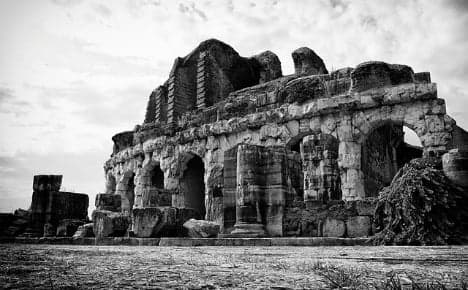
Italy has so much history that it's hard to know where to visit when the weekend arrives. Here are six uniquely, fascinating and downright spiffing Roman sites that are well worth a visit.
Spartacus' Theatre
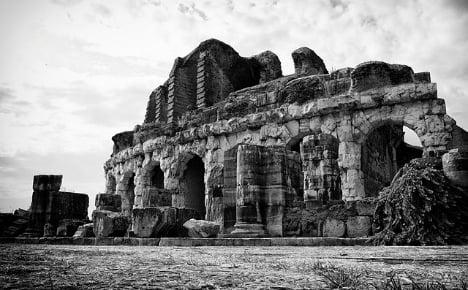
Photo: Nicola d'orta
The Anfiteatro Campano in Campania was built in the first century AD and is 49m high, with a circumference of 170 metres. It once hosted thousands of baying, bloodthirsty Romans who came to watch gladiators perform.
Although the ruin might not be quite as well preserved as the Flavian Ampitheater in Rome, a visitor ticket costs just €2.50 – some €10 less than the price of a visit to the Colosseum.
What's more, the Anfiteatro Campano was the arena in which legendary gladiator Spartacus led a slaves' rebellion against the might of the Roman Empire.
A crowd-free Pompeii?
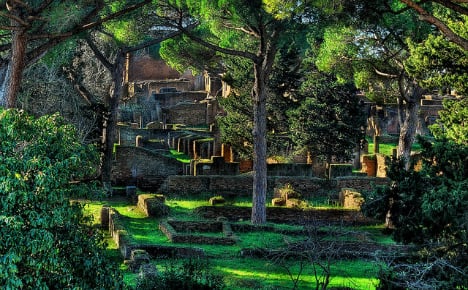
Photo: Riccardo Cuppini
Located near Rome, Ostia Antica was once a thriving port town, which handled much of the Eternal City's imports and exports until it was abandoned in AD 476.
The ruins at Ostia Antica are much like those at Pompeii except they don't contain any luxury villas.
They do contain roman public toilets, homes, warehouses, tombs, shops and bars. If you're staying in Rome it's a much easier day trip than Pompeii and a great way to experience life in a Roman town without having to endure the hordes of tourists who flock to Italy's most-visited cultural site each day.
A lost supercity
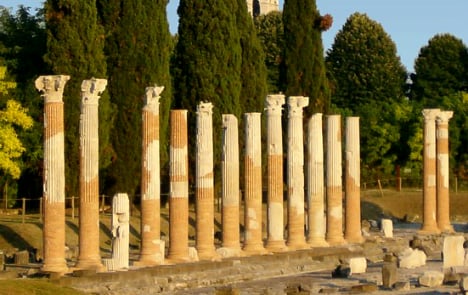
Part of the Roman forum in Aquilea. Photo: Wikimedia.
Today the town of Aquilea in northeast Italy's Friuli-Venezia Giulia region is home to just 7,000 people. But during antiquity it was one of the most important trading cities in the Mediterranean with a population of 100,000.
In fact, it was so large that much of the ancient city has not yet been excavated and lies buried under the countryside surrounding the town.
But Aquilea's Roman forum in the centre of town is extremely well preserved and it's easy to imagine how it buzzed with merchants and traders during the city's heydey.
Visitors can also find a museum filled with pieces found in the area around Aquilea, including ancient mosaics, ceramics, jewellery, bronzes and weaponry, which help paint a vivid picture of life 2,000 years ago.
Nero's massive swimming pool
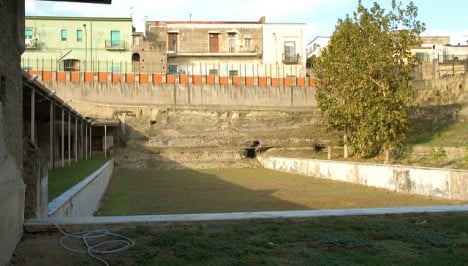
Older than it looks: Nero's pool. Photo: Wikimedia
It is thought that the plush Villa Oplontis in Campania once belonged to Emperor Nero. The house is certainly a fitting place for a nobleman.
It contains huge rooms with beautiful frescoes and mosaics, a bath house and an incredible 60-meter swimming pool. That's 10 meters longer than Olympic size!
Roman girls in Bikinis
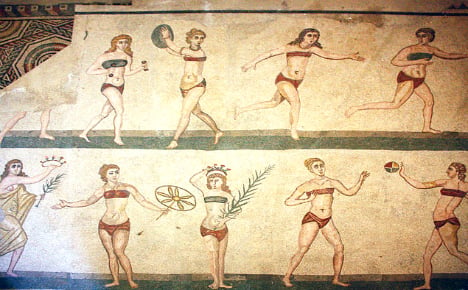
The bikini isn't as modern as you might think. Photo: Kenton Greening
Located near the town of Enna in central Sicily, the Villa Romana del Casale is a Roman villa with some of the best preserved and finest examples of Roman mosaic art.
Expertly created mosaics provide fascinating insights into Roman daily life depicting the ancients at work and play. Curiously, one mosaic unearthed in 1960 shows Roman girls frolicking in bikinis. Its discovery came 14 years after Parisien designer Luis Rèard came up with the design for the iconic swimsuit.
The Empire's forgotten capital
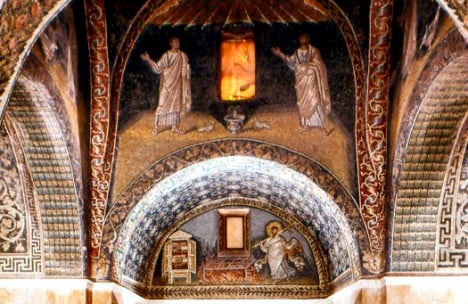
Mosaics above the tomb of Queen Galla. Photo: Wikimedia
Ravenna is the town where Julius Ceasar gathered his troops before marching on Rome in AD 49 – but the city only really came into its own during the twilight of the Roman Empire.
It was even the Empire's western capital from AD 402 until its collapse in AD 476. Owing to this the town provides many fantastic examples of late Roman art and early christian churches.
The Basilica di San Vitale is a unique blend of Roman, Byzantine and Baroque, while the Mauseleum of Roman Queen Galla includes a stunning scene of San Lorenzo in flames, which allegedly inspired poet Dante Alighieri to write The Divine Comedy.
Comments
See Also
Spartacus' Theatre

Photo: Nicola d'orta
The Anfiteatro Campano in Campania was built in the first century AD and is 49m high, with a circumference of 170 metres. It once hosted thousands of baying, bloodthirsty Romans who came to watch gladiators perform.
Although the ruin might not be quite as well preserved as the Flavian Ampitheater in Rome, a visitor ticket costs just €2.50 – some €10 less than the price of a visit to the Colosseum.
What's more, the Anfiteatro Campano was the arena in which legendary gladiator Spartacus led a slaves' rebellion against the might of the Roman Empire.
A crowd-free Pompeii?

Photo: Riccardo Cuppini
Located near Rome, Ostia Antica was once a thriving port town, which handled much of the Eternal City's imports and exports until it was abandoned in AD 476.
The ruins at Ostia Antica are much like those at Pompeii except they don't contain any luxury villas.
They do contain roman public toilets, homes, warehouses, tombs, shops and bars. If you're staying in Rome it's a much easier day trip than Pompeii and a great way to experience life in a Roman town without having to endure the hordes of tourists who flock to Italy's most-visited cultural site each day.
A lost supercity

Part of the Roman forum in Aquilea. Photo: Wikimedia.
Today the town of Aquilea in northeast Italy's Friuli-Venezia Giulia region is home to just 7,000 people. But during antiquity it was one of the most important trading cities in the Mediterranean with a population of 100,000.
In fact, it was so large that much of the ancient city has not yet been excavated and lies buried under the countryside surrounding the town.
But Aquilea's Roman forum in the centre of town is extremely well preserved and it's easy to imagine how it buzzed with merchants and traders during the city's heydey.
Visitors can also find a museum filled with pieces found in the area around Aquilea, including ancient mosaics, ceramics, jewellery, bronzes and weaponry, which help paint a vivid picture of life 2,000 years ago.
Nero's massive swimming pool

Older than it looks: Nero's pool. Photo: Wikimedia
It is thought that the plush Villa Oplontis in Campania once belonged to Emperor Nero. The house is certainly a fitting place for a nobleman.
It contains huge rooms with beautiful frescoes and mosaics, a bath house and an incredible 60-meter swimming pool. That's 10 meters longer than Olympic size!
Roman girls in Bikinis

The bikini isn't as modern as you might think. Photo: Kenton Greening
Located near the town of Enna in central Sicily, the Villa Romana del Casale is a Roman villa with some of the best preserved and finest examples of Roman mosaic art.
Expertly created mosaics provide fascinating insights into Roman daily life depicting the ancients at work and play. Curiously, one mosaic unearthed in 1960 shows Roman girls frolicking in bikinis. Its discovery came 14 years after Parisien designer Luis Rèard came up with the design for the iconic swimsuit.
The Empire's forgotten capital

Mosaics above the tomb of Queen Galla. Photo: Wikimedia
Ravenna is the town where Julius Ceasar gathered his troops before marching on Rome in AD 49 – but the city only really came into its own during the twilight of the Roman Empire.
It was even the Empire's western capital from AD 402 until its collapse in AD 476. Owing to this the town provides many fantastic examples of late Roman art and early christian churches.
The Basilica di San Vitale is a unique blend of Roman, Byzantine and Baroque, while the Mauseleum of Roman Queen Galla includes a stunning scene of San Lorenzo in flames, which allegedly inspired poet Dante Alighieri to write The Divine Comedy.
Join the conversation in our comments section below. Share your own views and experience and if you have a question or suggestion for our journalists then email us at [email protected].
Please keep comments civil, constructive and on topic – and make sure to read our terms of use before getting involved.
Please log in here to leave a comment.